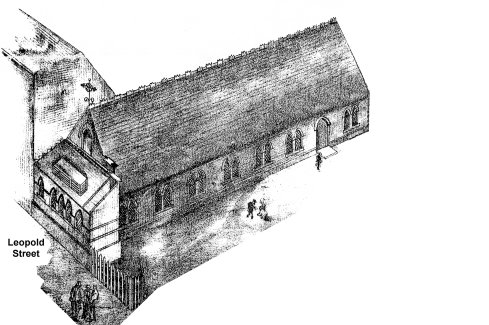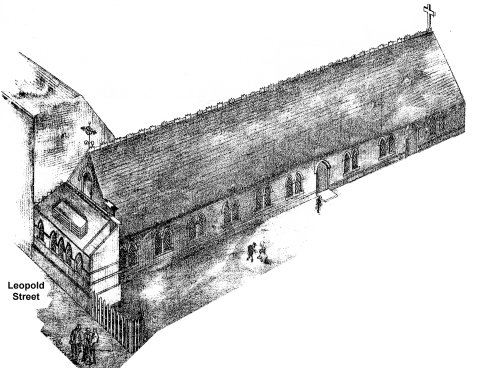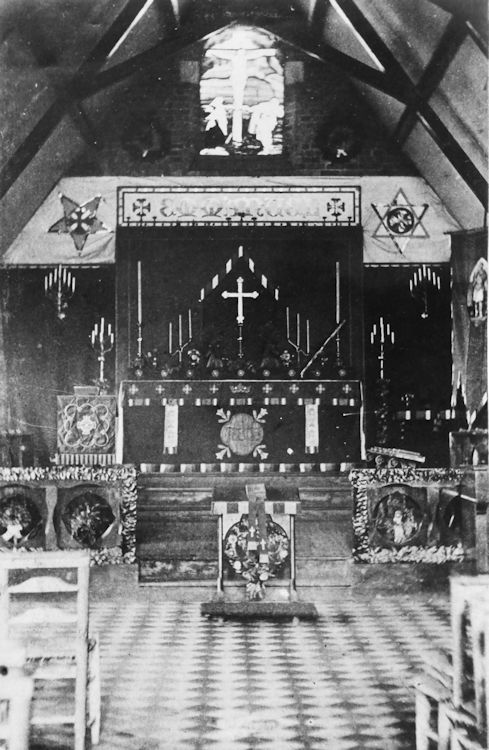The Mission Church of St Alban the Martyr
This page is part of our project "Revealing St Alban's Hidden Heritage" supported by a grant from The National Lottery Heritage Fund, thanks to players of The National Lottery.
The first 'Temporary' Mission church of St Alban the Martyr was a small brick chapel built in 1865 in Leopold Street to hold 250 worshippers. Dr Oldknow, vicar of Holy Trinity, Bordesley, one of the first High Church or "Ritualist" priests in Birmingham, was keen to develop a mission to serve the corner of his district, then known as "Vaughton's Hole", and "the hilly fields" where cheap housing was being erected on the edge of Birmingham and where there were no schools or churches, and little sanitation. The priest he had invited to take charge of the Mission, the Revd James Pollock, had wanted a larger more temporary building which could accommodate as many people as possible, but Dr Oldknow insisted on a more permanent structure.
 The Mission Church as Built
The Mission Church as Built
The congregation soon grew, and in 1867 the building was extended at the west end to accommodate 450 worshippers. The new section doubled as a school room during the week.
 The Mission Church as Extended.
The Mission Church as Extended.

The population of Highgate and the number attending the church continued to grow and plans to create an independent District that could then become a Parish were advanced.
An Abortive Plan for a Permanent Church
In October, 1866, work began on the nave and aisles of a new ‘permanent’ Church to hold 500 on the corner of Leopold Street and Dymoke Street, beside the ‘temporary’ Church at a planned cost of £2,222. Designed by local Architect John Davis, if completed this church would have held 640 and had a tower at the west end. However, when the foundations had been laid and the walls had been built four or five feet above the floor level, work was suspended. News had been received that the Aston Trustees had managed to block the current scheme for the formation of St Alban's District. At that time Holy Trinity, Bordesley, was itself a District of the large, formerly rural, Parish of Aston. Without the formal District, independent of the District of Holy Trinity, Bordesley, the mission had no secure future as the Aston Trustees would in due course be able to appoint a Low-Church priest at Holy Trinity, who would then close the High-Church mission.
Building recommenced in 1870, once the creation of the District was certain, but to a cheaper design, again by architect John Davis, with new foundations. When the first 'permanent' church opened in 1871 the 'temporary' church was partitioned to provide separate school rooms for boys and girls.
Continue to learn about the first 'permanent' Church here: http://www.saintalban.co.uk/history/Second-Church/.
